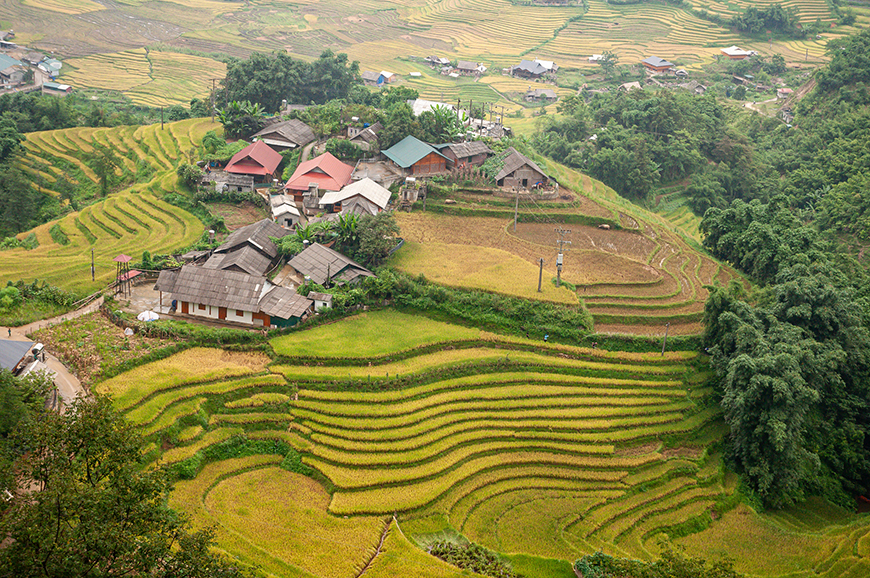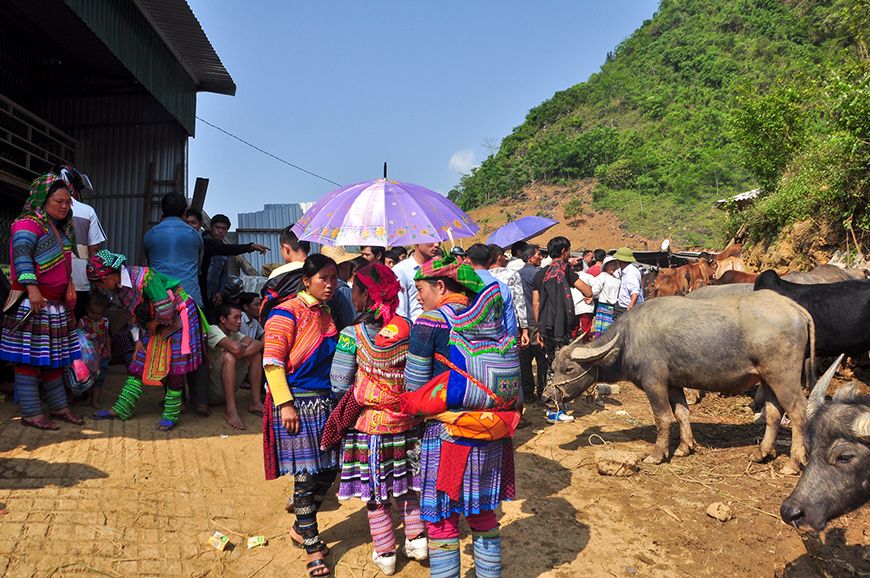Surrounded by China to the north, Laos to the west and the South China Sea to the East,
Northern Vietnam contains the capital of the country, Hanoi, as well as some of the nation’s most famous sights, like the otherworldly Ha Long Bay, the valleys and terraced rice paddies of Sa Pa, and the soaring mountains of Ha Giang.
This is the cradle of Vietnamese civilization. It was here that after millennia of Chinese domination, the first truly independent state of Vietnam was created in 938, and it would take centuries of conquest and migration for it to reach what we now consider Central & Southern Vietnam.

Terrace Rice in Northern Vietnam.
In modern times, the most defining events are of course the Indochina wars against France and the United States. While most of the battles took place further south, the North was heavily bombed during the wars, but you would never guess it by visiting the now bustling and thriving region.
The people here are friendly and open, eager for you to discover the natural and cultural wonders of their country.
Mercifully cooler than the South, Northern Vietnam sports four distinct seasons, including a relatively cold winter, with temperatures in Hanoi occasionally getting close to freezing during the coldest part of the year, and the mountains in the northern reaches occasionally receiving snowfall.
The region is ethnically and culturally diverse, with significant populations of Tai-Kadai and Hmong-Mien ethnic groups in the northern mountains and hills, complementing the ethnically Vietnamese majority. The focal point of Northern Vietnam, Hanoi, feels incredibly authentic, with relatively little western influence compared to other cities in South East Asia.
Exploring the city’s old quarter is an unmissable experience. Sporting narrow alleys lit by colourful lights, charming establishments serving bia hoi, local beer freshly brewed every day, right on the street and a multitude of live performances during the weekend.
.jpg)
Aerial view of the glorious UNESCO World Heritage Site of Ha Long Bay.
Venturing beyond the city, no trip to Northern Vietnam can be complete without a visit to famous Ha Long Bay. Explorable both on day-trips and multi-day cruises in all price ranges, the caves and cliffs of Ha Long make for an utterly unique experience.
►
Learn more about Ha Long Bay - Cat Ba Archipelago
Up in the northern mountainous reaches near the border with China, there is also much to see and do. Here the ethnic diversity of the region becomes more apparent, and you’ll see people in their traditional tribal clothing everywhere you look. Hiking through the valleys or Sa Pa or taking a motorbike around the famous Ha Giang Loop makes you feel like you’ve truly gone off the beaten path, and stepped into the final frontier of Vietnam.
Also on the Chinese border, Ban Gioc Waterfall is one of the largest waterfalls along a border in the world, and the views of the thundering falls from aboard a boat are amazing to behold.

Buffalos form an integral part of rural agricultural life.
Southwest of Ban Gioc, you will find the largest freshwater lake in Vietnam, surrounded by the picturesque Ba Be National Park. Surrounded by limestone peaks covered in green forest, Ba Be Lake is an utterly serene location, and many caves and waterfalls are scattered around its shores.
Vietnamese food is popular around the world, and coming here to its home, it’s easy to see why. Whether you want steamy Pho, the fusion of French and Vietnamese cuisine that is the Banh Mi, sumptuous Bun cha or a Vietnamese style hotpot, there is no better place to experience it than in the heart of Hanoi.
In conclusion, a visit to Northern Vietnam to experience its rich history and culture, beautiful coastline and rugged mountains is something everyone should experience at least once, so don’t hesitate to make it the destination for your next adventure.